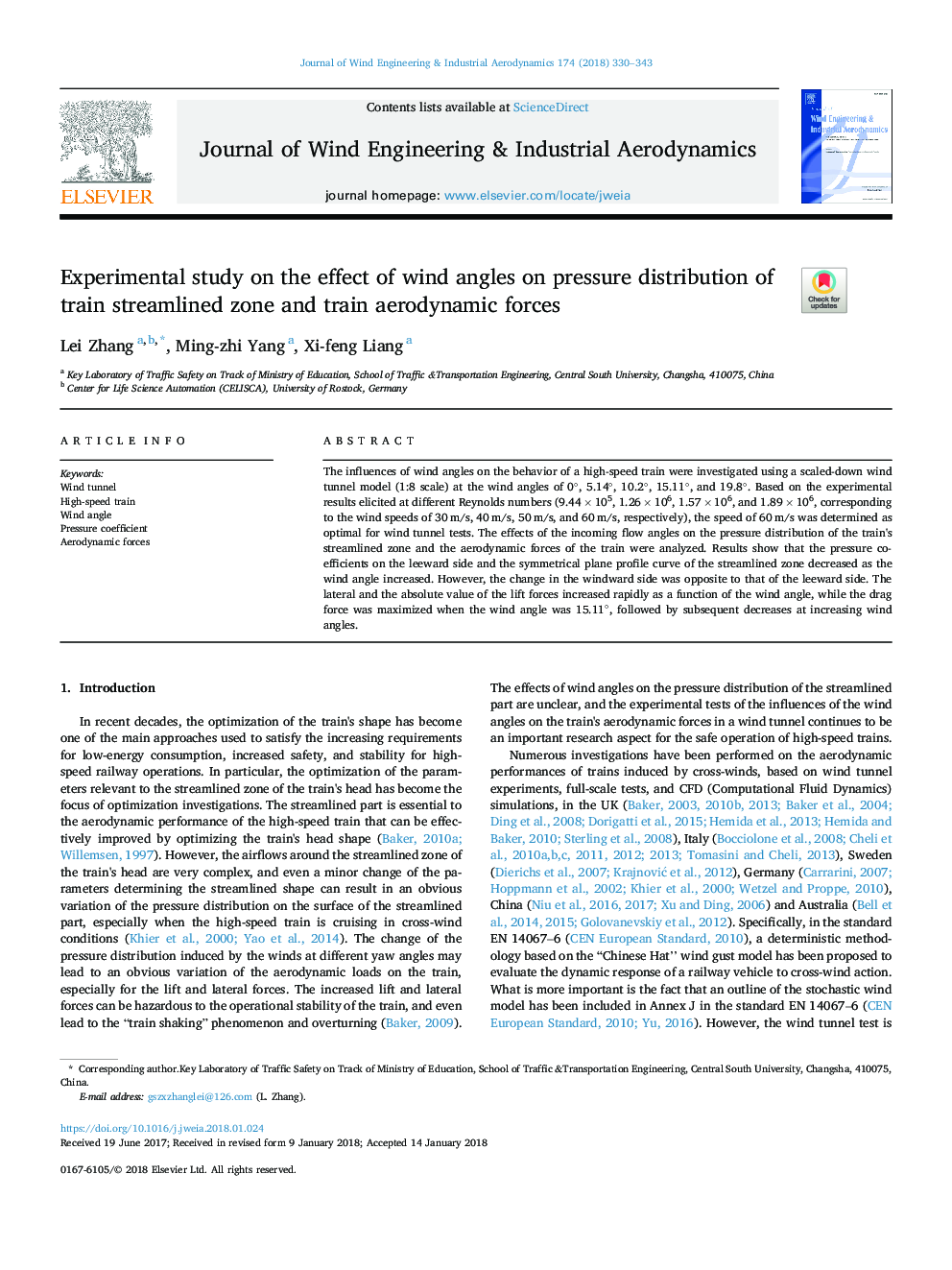| Article ID | Journal | Published Year | Pages | File Type |
|---|---|---|---|---|
| 6757101 | Journal of Wind Engineering and Industrial Aerodynamics | 2018 | 14 Pages |
Abstract
The influences of wind angles on the behavior of a high-speed train were investigated using a scaled-down wind tunnel model (1:8 scale) at the wind angles of 0°, 5.14°, 10.2°, 15.11°, and 19.8°. Based on the experimental results elicited at different Reynolds numbers (9.44â¯Ãâ¯105, 1.26â¯Ãâ¯106, 1.57â¯Ãâ¯106, and 1.89â¯Ãâ¯106, corresponding to the wind speeds of 30â¯m/s, 40â¯m/s, 50â¯m/s, and 60â¯m/s, respectively), the speed of 60â¯m/s was determined as optimal for wind tunnel tests. The effects of the incoming flow angles on the pressure distribution of the train's streamlined zone and the aerodynamic forces of the train were analyzed. Results show that the pressure coefficients on the leeward side and the symmetrical plane profile curve of the streamlined zone decreased as the wind angle increased. However, the change in the windward side was opposite to that of the leeward side. The lateral and the absolute value of the lift forces increased rapidly as a function of the wind angle, while the drag force was maximized when the wind angle was 15.11°, followed by subsequent decreases at increasing wind angles.
Related Topics
Physical Sciences and Engineering
Energy
Renewable Energy, Sustainability and the Environment
Authors
Lei Zhang, Ming-zhi Yang, Xi-feng Liang,
